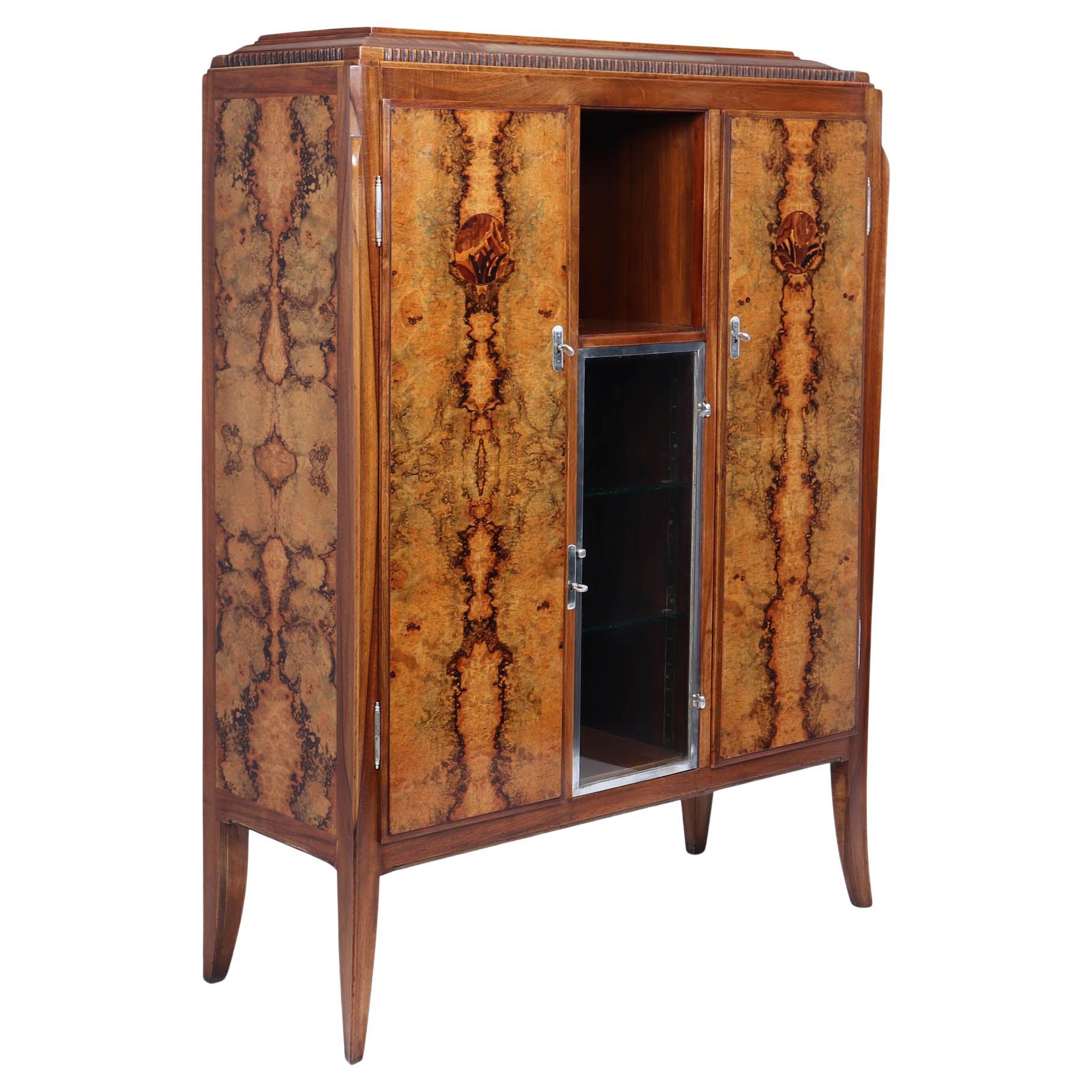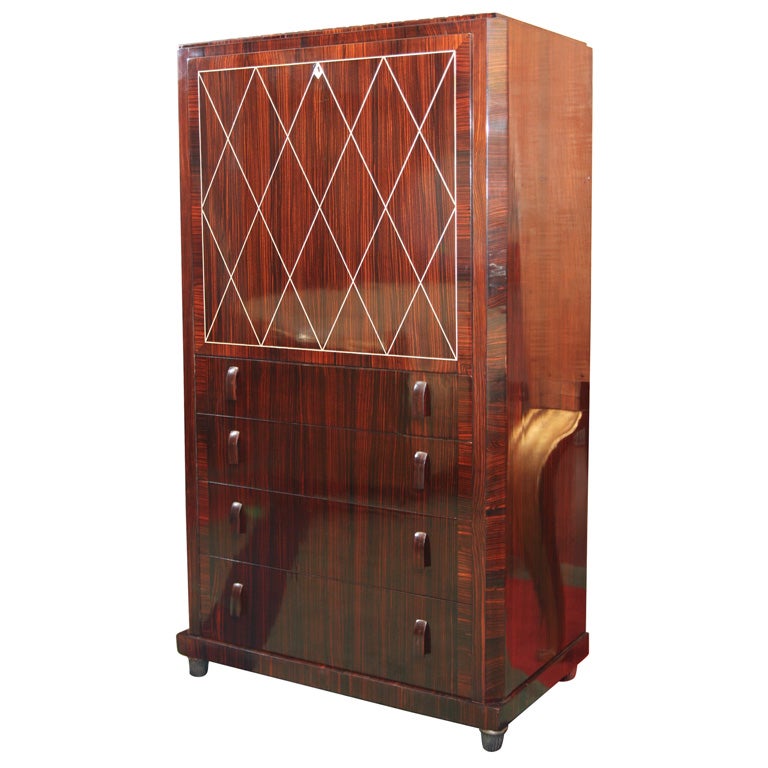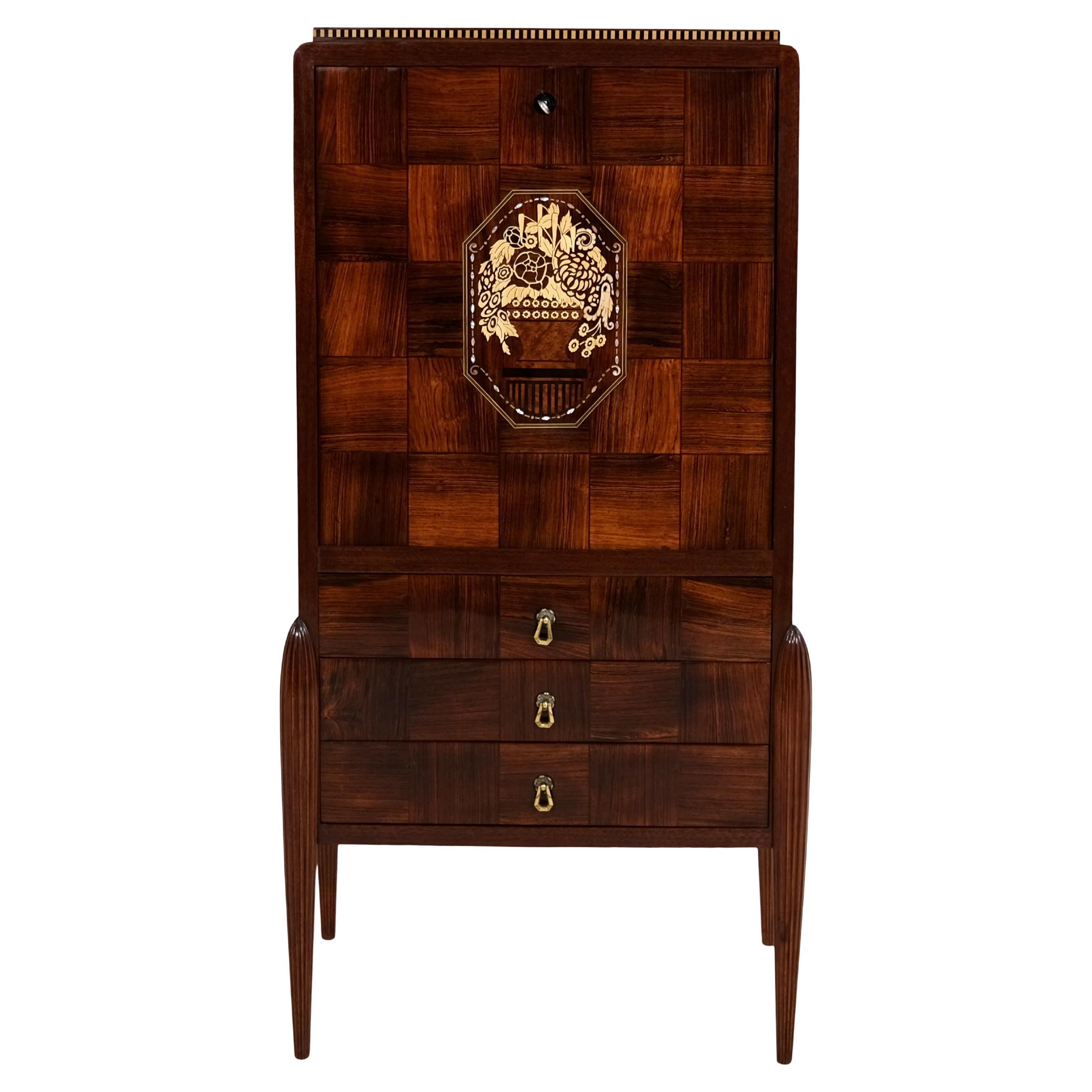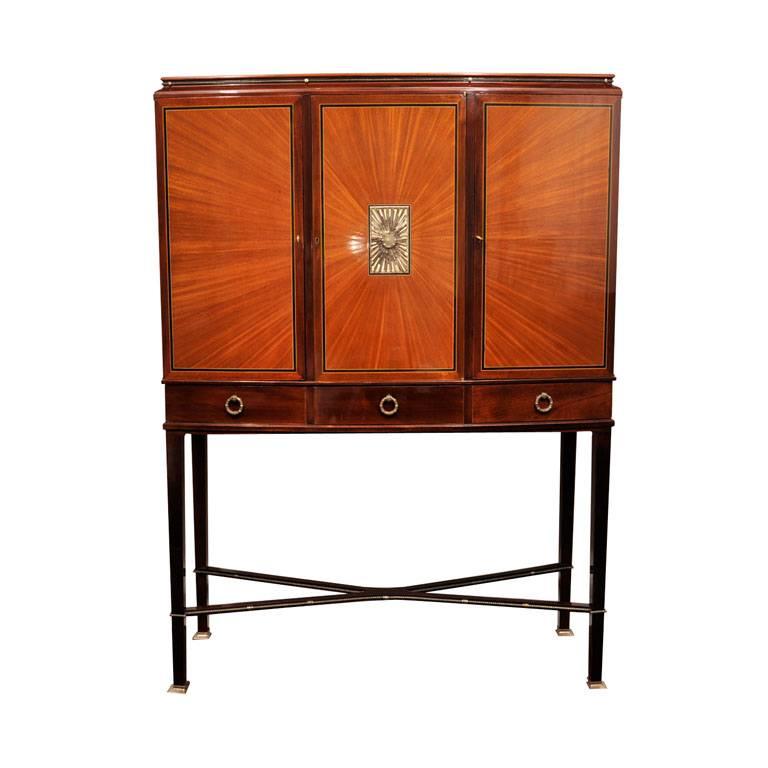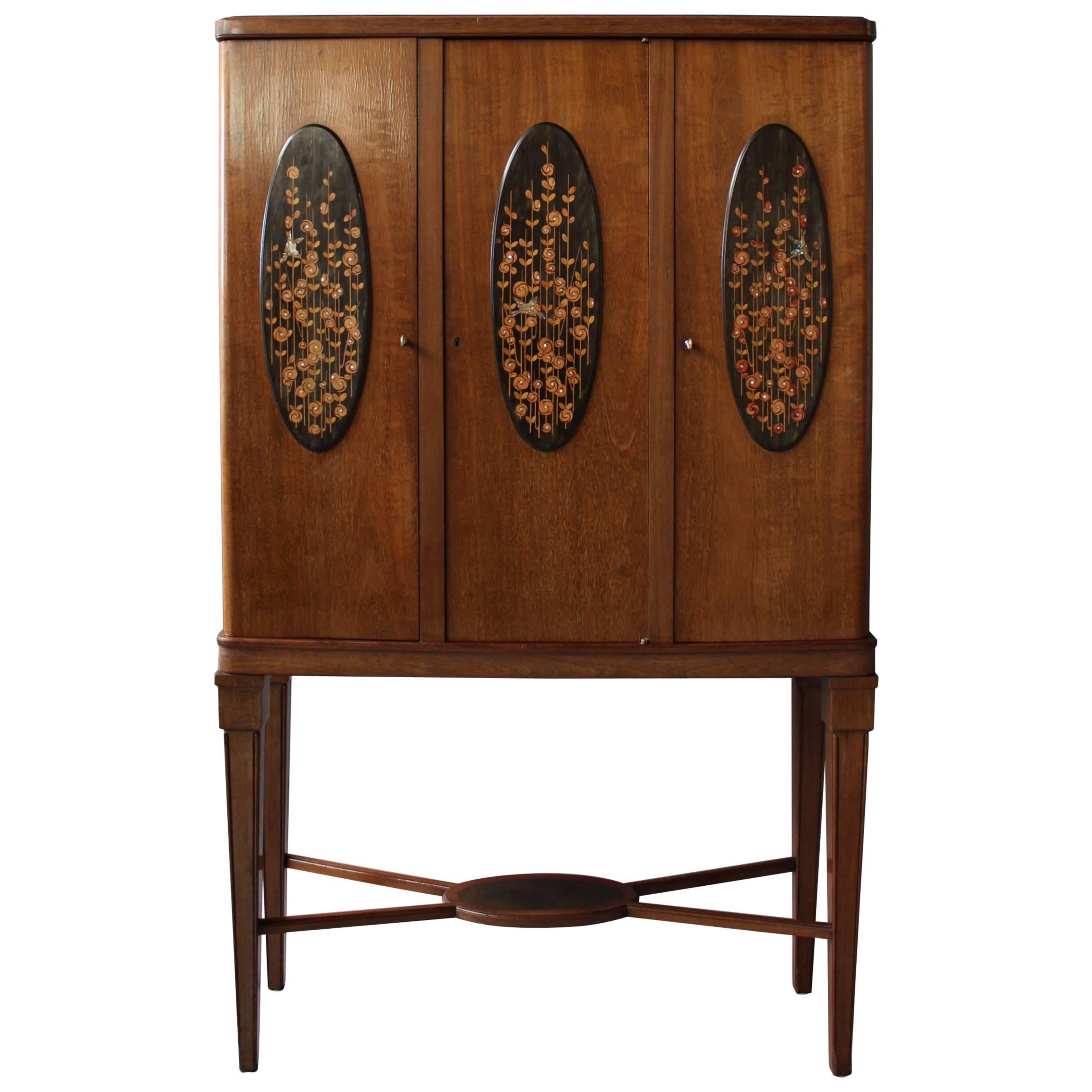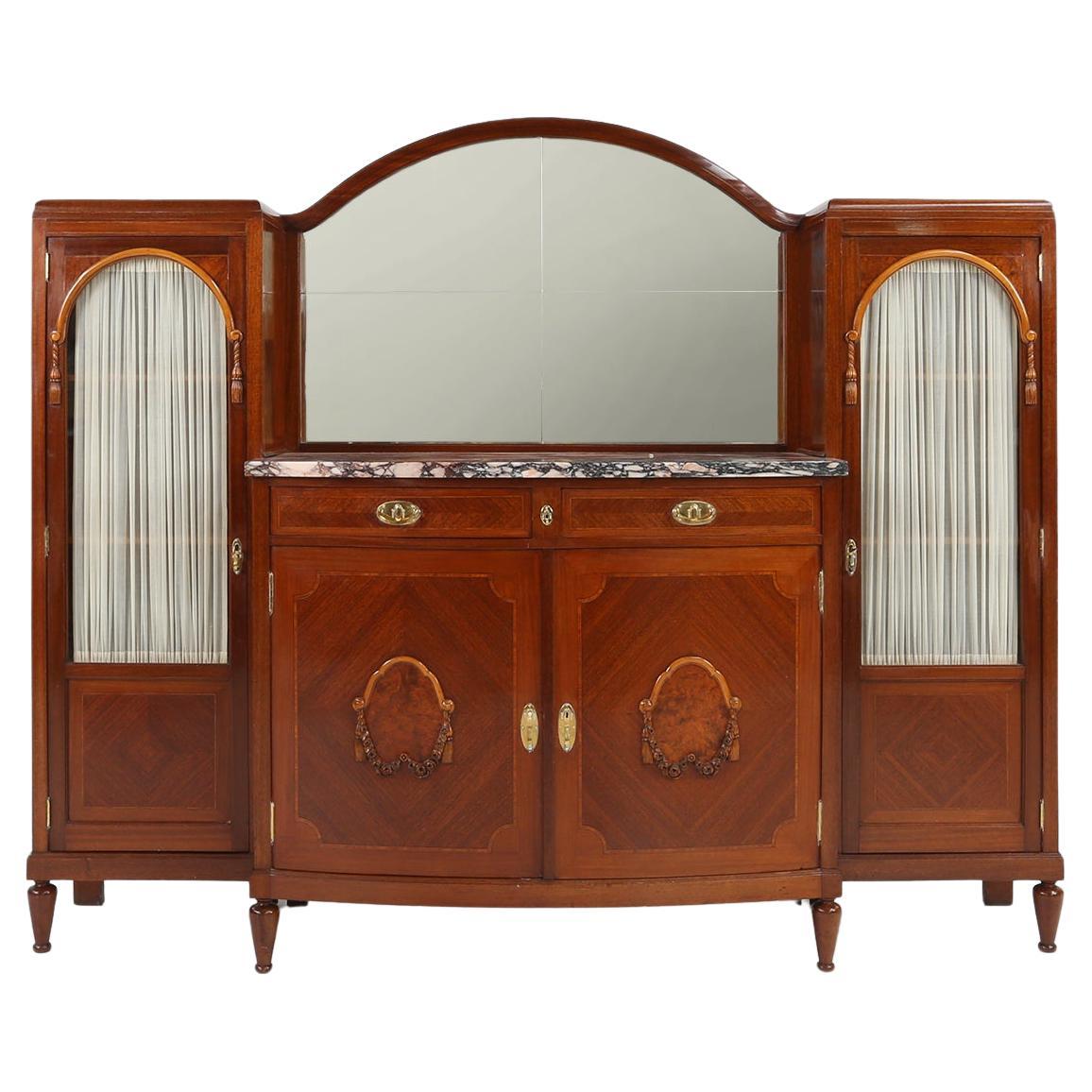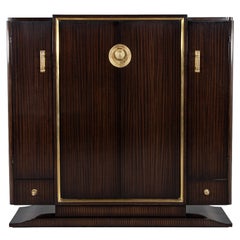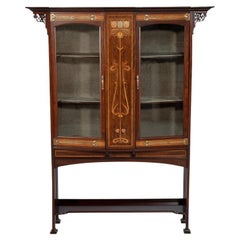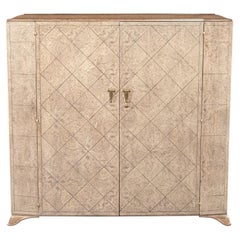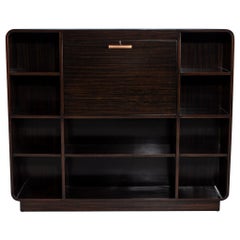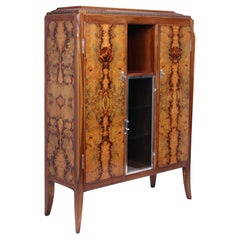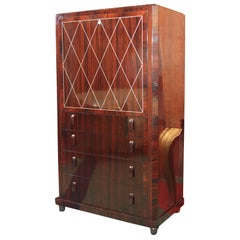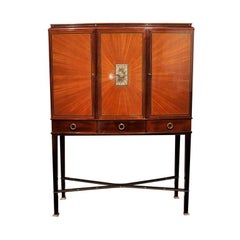Items Similar to Art Deco Secretaire Cabinet by Jules Deroubaix
Video Loading
Want more images or videos?
Request additional images or videos from the seller
1 of 14
Art Deco Secretaire Cabinet by Jules Deroubaix
$16,800
$21,00020% Off
£12,826.72
£16,033.4120% Off
€14,821.17
€18,526.4620% Off
CA$23,584.02
CA$29,480.0220% Off
A$26,286.85
A$32,858.5620% Off
CHF 13,791.81
CHF 17,239.7620% Off
MX$321,005.26
MX$401,256.5820% Off
NOK 174,634.26
NOK 218,292.8320% Off
SEK 165,055.94
SEK 206,319.9220% Off
DKK 110,616.82
DKK 138,271.0320% Off
About the Item
This Jules Deroubaix display cabinet secretaire is timeless, functional, and effortlessly chic. Made of burl sandalwood, it showcases a drop door paneled with gorgeous shagreen to add texture and French style. When opened, it reveals an ebony interior with small drawers for trinkets, stationary and more. Below the drop door are four lower drawers which all lock if necessary, and to the side are the two mirrored display compartments cased in domed glass and trimmed with brass. The side display cabinets have glass shelving, perfect for picture frames and other decor. This piece sits atop tapered legs, and is a great addition to any space! Good, Original condition, Drop down door key non functional but still secures, new glass shelves.
- Creator:Jules Deroubaix (Designer)
- Dimensions:Height: 51.25 in (130.18 cm)Width: 42 in (106.68 cm)Depth: 18.5 in (46.99 cm)
- Style:Art Deco (In the Style Of)
- Materials and Techniques:
- Place of Origin:
- Period:
- Date of Manufacture:1935
- Condition:Replacements made: New glass shelves. Wear consistent with age and use. Good, Original condition, Drop down door key non functional but still secures, new glass shelves.
- Seller Location:North York, CA
- Reference Number:Seller: C-30151stDibs: LU884925219452
About the Seller
5.0
Platinum Seller
Premium sellers with a 4.7+ rating and 24-hour response times
Established in 1983
1stDibs seller since 2010
420 sales on 1stDibs
Typical response time: <1 hour
- ShippingRetrieving quote...Shipping from: North York, Canada
- Return Policy
Authenticity Guarantee
In the unlikely event there’s an issue with an item’s authenticity, contact us within 1 year for a full refund. DetailsMoney-Back Guarantee
If your item is not as described, is damaged in transit, or does not arrive, contact us within 7 days for a full refund. Details24-Hour Cancellation
You have a 24-hour grace period in which to reconsider your purchase, with no questions asked.Vetted Professional Sellers
Our world-class sellers must adhere to strict standards for service and quality, maintaining the integrity of our listings.Price-Match Guarantee
If you find that a seller listed the same item for a lower price elsewhere, we’ll match it.Trusted Global Delivery
Our best-in-class carrier network provides specialized shipping options worldwide, including custom delivery.More From This Seller
View AllArt Deco Wardrobe Armoire Cabinet, Circa 1940's France
Located in North York, ON
This stunning Art Deco wardrobe armoire, made in France circa 1940s, is crafted from rich Macassar wood and finished in a polished high-gloss that highlights its luxurious grain. Bol...
Category
Vintage 1940s French Art Deco Wardrobes and Armoires
Materials
Brass
Art Deco Dry Bar Display Cabinet
Located in North York, ON
Introducing an exquisite Art Deco Bar Display Cabinet, a stunning piece crafted in France during the iconic 1950s era. This cabinet is a true repr...
Category
Vintage 1950s French Art Deco Bookcases
Materials
Velvet, Glass, Wood
French Art Deco Burled Walnut Armoire Cabinet
Located in North York, ON
Introducing our stunning French Art Deco Burled Walnut Armoire Cabinet, a true masterpiece of furniture design. This exquisite piece is expertly ...
Category
Vintage 1930s French Art Deco Wardrobes and Armoires
Materials
Brass
French Art Deco Bar Cabinet Circa 1950’s
Located in North York, ON
This beautiful French Art Deco bar cabinet from the 1950’s is an elegant piece of furniture that is sure to be the focal point of any room....
Category
Vintage 1950s French Art Deco Dry Bars
Materials
Metal
$5,200 Sale Price
20% Off
Antique Art Deco Marble Top Buffet Cabinet
Located in North York, ON
This exquisite Art Deco buffet cabinet, hailing from Nantes France circa the 1930s, seamlessly blends elegance and functionality. Featuring a stunning green marble top, it serves as ...
Category
Vintage 1930s French Art Deco Buffets
Materials
Marble
Vintage Mid-Century Modern Walnut Wardrobe Cabinet
Located in North York, ON
Step into the captivating world of mid-century modern design with this exquisite walnut wardrobe cabinet, meticulously crafted in the USA during the 1970s. Its timeless silhouette is...
Category
Vintage 1970s American Mid-Century Modern Cabinets
Materials
Walnut
You May Also Like
French Art Deco Cabinet by E Jacquemin
Located in Paddock Wood Tonbridge, GB
Art Deco Cabinet by E Jacquemin
A lovely French Art Deco cabinet produced by Emille Jacquemin in the 1920’s in burr walnut and solid walnut, the cabinet is of exceptional quality wi...
Category
Vintage 1920s French Art Deco Cabinets
Materials
Walnut
Art Deco Secretaire in the Manner of Ruhlmann
Located in Bridgewater, CT
An exceptional quality Art Deco Secretaire in the manner of J.E. Ruhlmann in Ebene de Macassar with galuchat (shagreen) interior, circa 1930.
Category
Vintage 1930s French Art Deco Secretaires
Materials
Macassar
Early French Art Deco Secretaire Desk with Marquetry and Inlays
Located in Ulm, DE
Secretary
Wooden body, hand-polished shellac
probably stained ash
elaborate inlays and marquetry
freshly mirrored inside
Early Art Déco, France around 1925
Dimensions:
Width: 70 c...
Category
Vintage 1920s French Art Deco Secretaires
Materials
Wood
Art Deco Cabinet in the Manner of Alban Chambon
Located in Pompano Beach, FL
Mahogany, walnut, ebony and brass cabinet with nickel-plated steel hardware. This piece is in the manner of Alban Chambon. There are three doors and thre...
Category
Early 20th Century Belgian Cabinets
$28,000 Sale Price
47% Off
Fine French Art Deco Three-Door Cabinet by Maurice Dufrêne
By Maurice Dufrêne
Located in Long Island City, NY
A fine French Art Deco three doors amaranth cabinet by Maurice Dufrene.
Each door decorated with a floral marquetry oval panel.
Interior is bird's-eye maple veneered.
Category
Vintage 1920s French Art Deco Cabinets
Materials
Birdseye Maple, Mother-of-Pearl, Wood
Art Deco cabinet by De Coene 1930
By De Coene Frères
Located in Meulebeke, BE
This cabinet was made in 1930 by De Coene in Belgium. Made of high-quality materials and in excellent condition.
The cabinet has two side cabinets with glass and a curtain behind th...
Category
Vintage 1930s Belgian Art Deco Cabinets
Materials
Marble, Brass
More Ways To Browse
Used Glass Shelving
Chrome Display Case
Chrome Display Cabinets
Ebony Display Cabinet
Chrome Art Deco Display
Art Deco Shelving
Art Deco Trinket
Burl Mirror Frame
Ebony Frame Mirror
Art Deco Brass Picture Frame
Domed Mirror
Trinket Cabinet
Chrome And Glass Shelving
Brass And Chrome Picture Frame
Art Deco Glass Shelving
Art Deco Chrome Picture Frame
Domed Display Cabinet
Small Shagreen Cabinet
